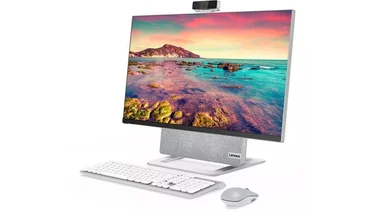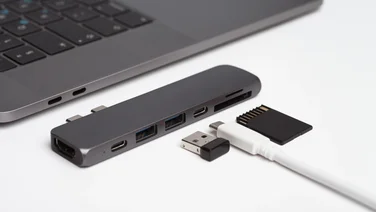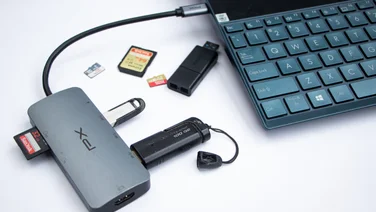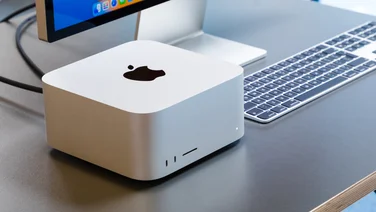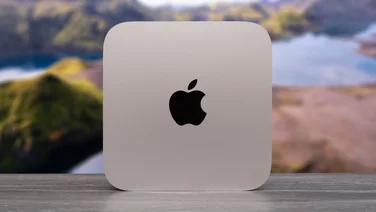To help us provide you with free impartial advice, we may earn a commission if you buy through links on our site. Learn more



With its gloss white case and liquid cooling pipes, the CyberPower Apollo GT looks like a serious gaming PC – a really high-tech fridge, if you’re feeling less generous. It’s certainly not inconspicuously designed, but we were pleased with its sturdy build quality and perfectly finished interior. It’s not silent when it runs, though, as there are plenty of fans to supplement the liquid-cooled CPU: two at the top of the case, one at the back and an exhaust fan on the side panel which emits a particularly noticeable whine. None of the air vent grilles are protected with mesh to keep fluff from getting in, either.

Inside, there’s a new Intel Core i5-3750K Ivy Bridge processor overclocked to 4.5GHz – hence the need for the impressive liquid cooler. This is mounted on an Asus P8Z77-V LX motherboard, which has a surprisingly modest range of ports and features. It has three PCI slots, which seems rather unusual given the greater popularity of PCI-E x1 expansion cards. The backplane that lines up with the lowest PCI slot is occupied by power controls for the case’s internal white LED lighting. One of the motherboard’s two PCI-E x1 slots is also inaccessible, blocked by the dual-height graphics card. There’s also an extra PCI-E x16 slot, but it’s worth noting that it actually only runs at x4 speed.
The graphics card is an Nvidia GeForce GTX 670 with 2GB RAM, two DVI ports, an HDMI port and a DisplayPort, as well as support for connecting both 3D display hardware and up to four monitors. It’s a massively powerful card that’ll stand up to gaming at maximum quality for a long time to come, with average frame rates of 43.5fps in Crysis 2 and 106fps in Dirt 3. The PC’s raw processor power is every bit as impressive, producing an overall score of 145 in our benchmark tests.

The system is equipped with 8GB of 1,600MHz RAM in the form of two 4GB modules, leaving two free slots. That’s plenty of RAM for almost any task short of heavy duty video rendering, but the motherboard can take up to 32GB of RAM if you want to add more. There are also four SATA2 ports, all of them free, and two SATA3 ports. These are currently connected to the hard disk and optical disc drive. The PC is fitted with a Crucial SSD, which gives the system blistering boot times and disk access speeds. Unfortunately, with a capacity of just 128GB, the hard disk won’t keep you going for long if you want to install large games or store a lot of multimedia content on your PC. Windows 7 alone takes up over 50GB and additional space is occupied by a pre-installed partition containing an installer for Microsoft Office 2010 Starter.
Fortunately, if you want to add extra storage there are plenty of 3 1/2in drive bays available, but the two 5 1/2in bays above the DVD drive are occupied by part of the water cooling system. A 650W Corsair power supply means that there’s plenty of juice for the power-hungry graphics card as well as any components you may want to add.
The Apollo’s angular front panel has a door to conceal the 5 1/4in drive bays, but it can be a little awkward to get closed. On top of the PC are the power switches, two USB3 ports and two USB2 ports, as well as 3.5in headphone and mic ports. At the back of the PC are four USB2 ports and two USB3 ports. There’s also a PS/2 port for older keyboard or mouse connectors, 5.1 analogue surround sound outputs, an optical S/PDIF audio output and the obligatory Gigabit Ethernet port.

This is a without a doubt a fast and distinctive-looking performance gaming PC with brilliant performance in both processor-intensive tasks and 3D gaming. Unfortunately, it’s let down by its high price, relatively poor range of external ports, the disappointing inclusion of a DVD-RW rather than a Blu-ray drive and – in particular – its tiny hard disk. It’s also less that £100 cheaper than the Palicomp Alpha Detonator, which has comparable performance when it comes to processor power, a more powerful graphics card, a Blu-ray reader and a much larger, if slower, 2TB hard disk, making it a better buy.
